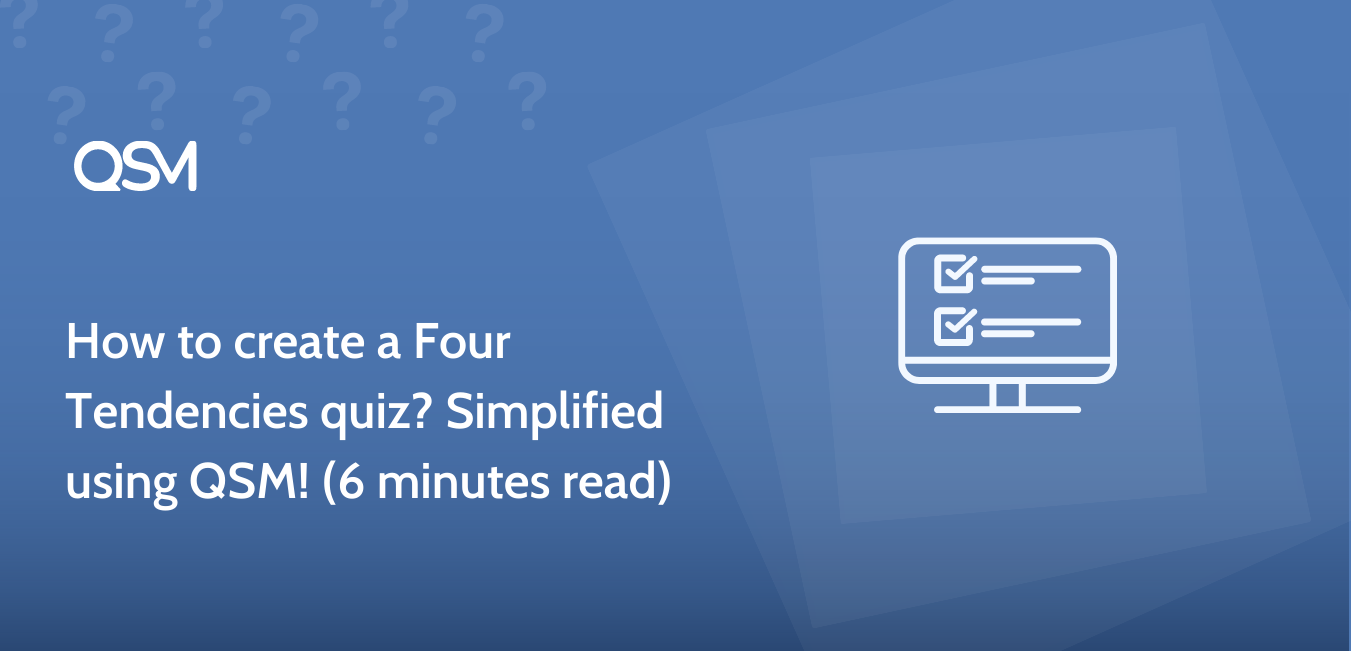If you have not taken a Four Tendencies quiz, this is your sign!
Have you ever wondered why some goals feel harder to achieve despite your best efforts, while others come naturally? Motivation is often the deciding factor in whether we stick to commitments in both personal and professional life. Knowing your motivational style can help you create an environment where meeting expectations becomes easier.

The Four Tendencies Quiz, devised by author Gretchen Rubin, is designed to do exactly that. It begins with a simple question: “How do I respond to expectations?” Rubin explains that expectations fall into two broad types. Outer expectations include requests from others or work deadlines. Inner expectations involve personal goals such as keeping up with a resolution or exercising regularly.
Your response to these expectations reveals your “tendency.” According to Rubin’s framework, there are four: Upholder, Questioner, Obliger, and Rebel. Each category reflects a unique approach to motivation and accountability. Before creating your own version of this quiz, it helps to understand the traits behind these tendencies and how to interpret the results.
In this blog, we will go through the steps to create a Four Tendencies quiz using the Quiz and Survey Master (QSM) plugin.
Table of Contents
Classification of Tendencies
The four tendencies defined by Gretchen Rubin are upholder, obliged, rebel, and questioner. Let us see each type and understand its basic principles and personality traits.
Upholder
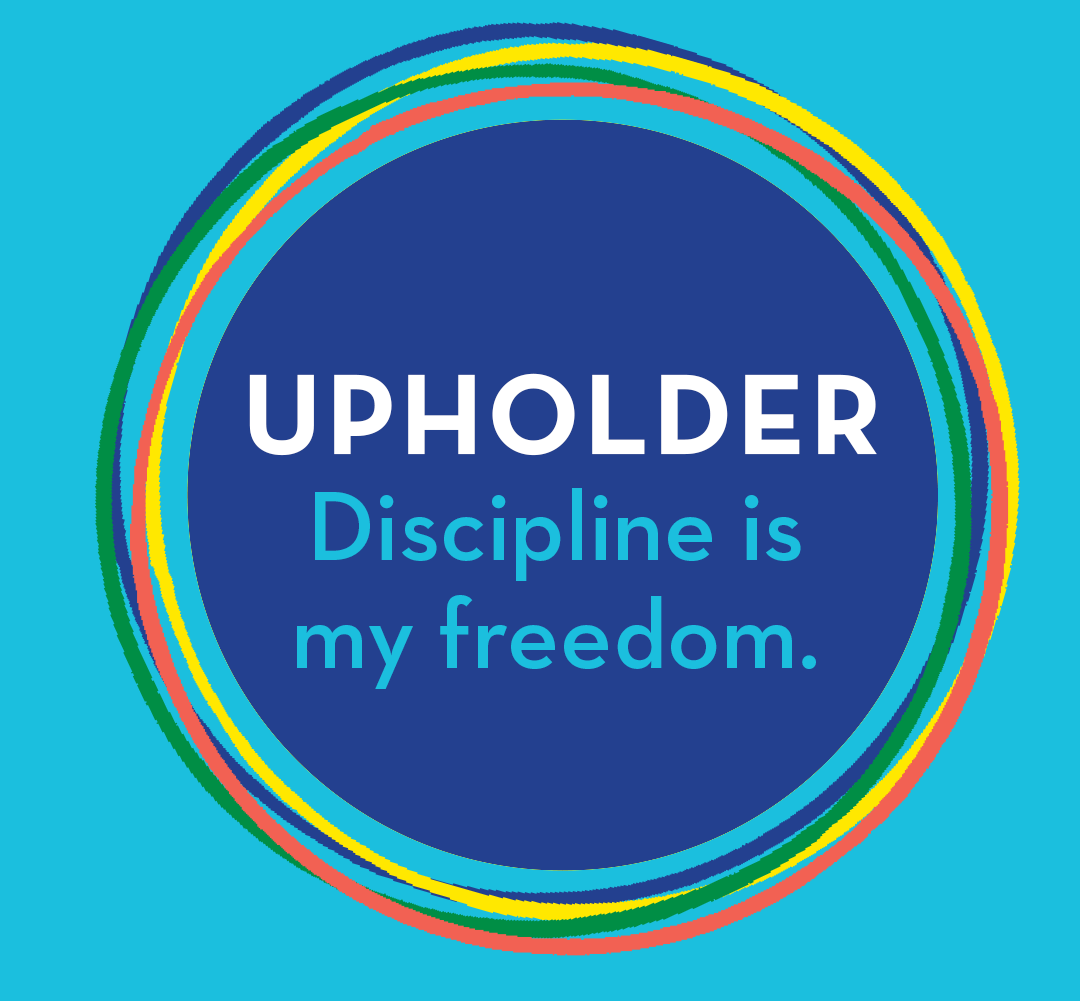
Meets inner and outer expectations
Luckily, Upholders excel at meeting both inner and outer expectations. They don’t struggle with habits and meeting expectations. Rather, they uphold the expectations others put on them and they put on themselves. They find contentment and joy while doing so. An Upholder may struggle with unclear expectations and deadlines. So, clarity and harmony with expectations are important to an Upholder.
Questioner
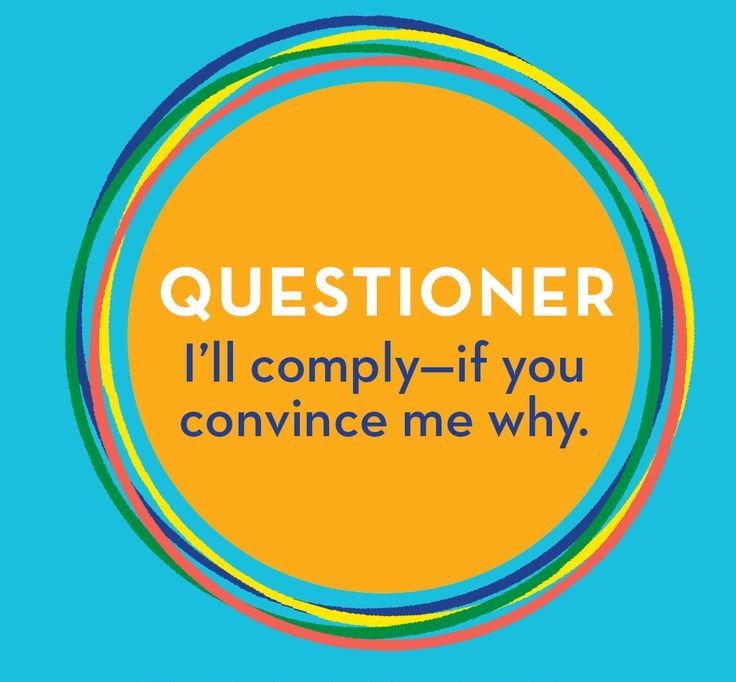
Eludes outer expectations, meets inner expectations
Gretchen Rubin Questioners are always wondering, “Why do I have to do it this way?” Questioners are very good at asking questions. This means that they question outer expectations and don’t meet these expectations unless they make sense to them. In case you are a questioner, you will probably want to find answers so you understand why certain expectations require fulfillment in a particular way.
Obliger
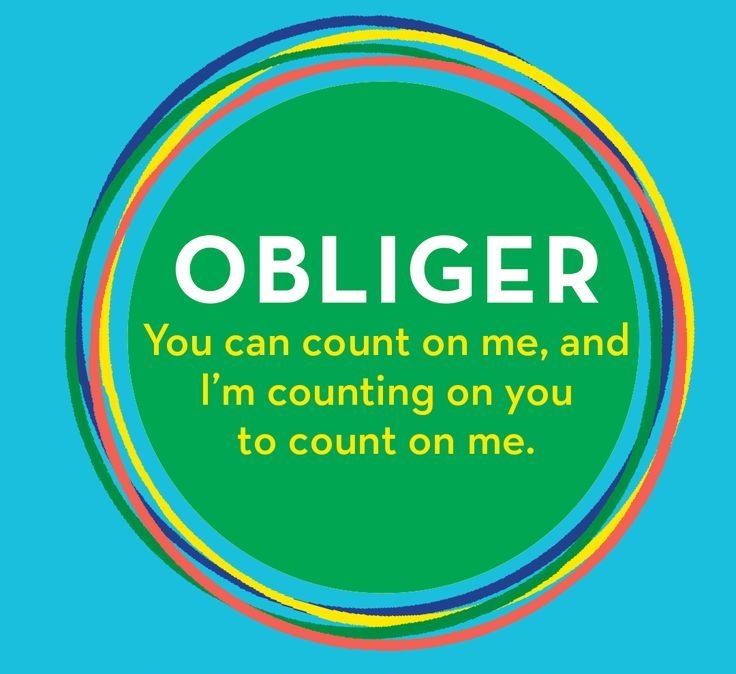
Meets outer expectations, eludes inner expectations
Obligers need organization and external liability for motivation. Among the four tendencies quiz classification, they are the ones who oblige on what they’re expected to do for others. Obligations are a piece of cake for them. Anyhow, meeting inner expectations like having personal goals with zero evaluation and accountability may be difficult for them.
Rebel
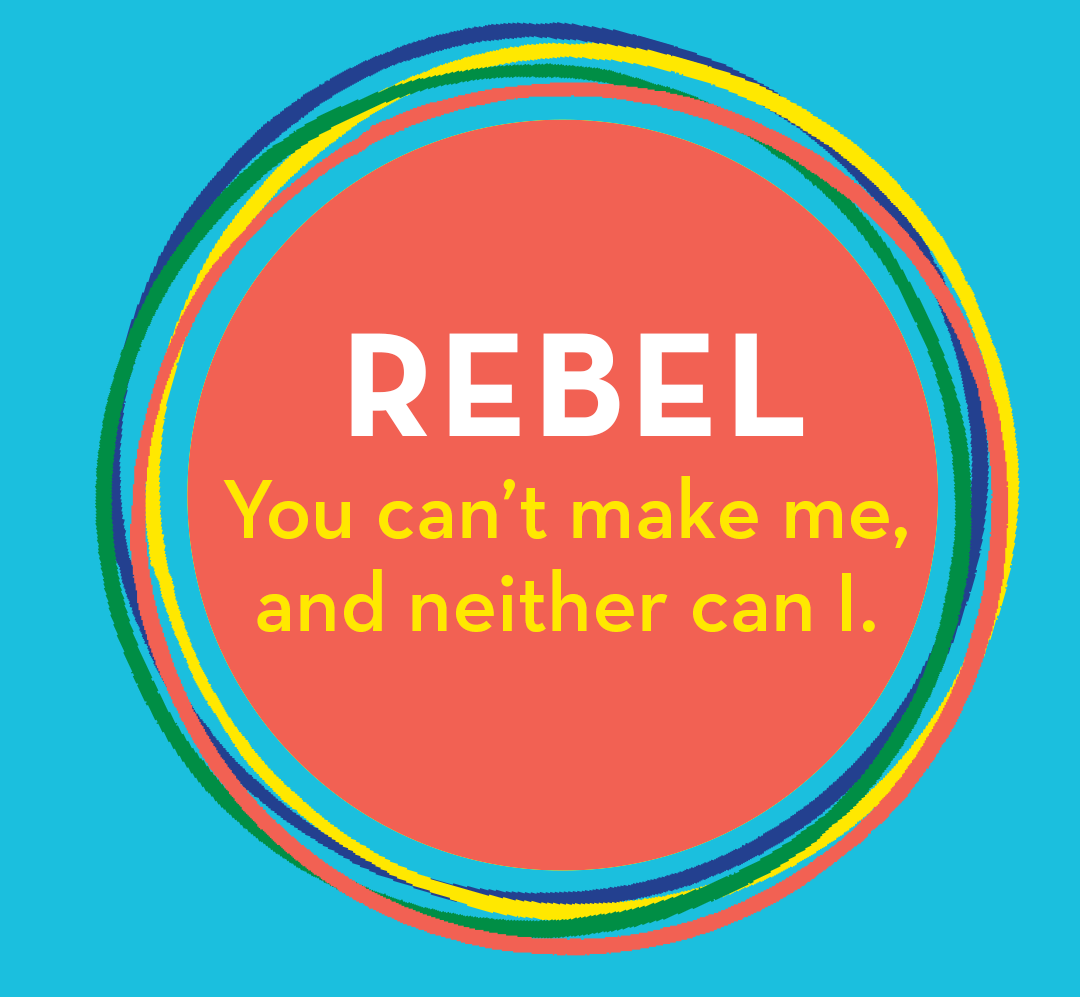
Eludes outer and inner expectations
Rebels resist strict rules and control. They do things their own way and in their own time. Rebels escape both inner and outer expectations. If you are a Rebel, you would probably wonder, “Then what motivates me?”. Simply, living in the moment, a sense of freedom, and doing what feels right. It implies, Rebel is likely to face problems working with others and others with them. They won’t answer, ” Your Deadline is on Monday,” like an Obliger.
How to make a Four Tendencies Quiz?
Step 1: Set up your quiz and enable Advanced Assessment
Begin by creating a new quiz in your WordPress dashboard through QSM → Quizzes/Surveys → Create New. Give it a simple title like Four Tendencies Quiz and select a theme that suits your blog or brand. Once the quiz shell is ready, install and activate the Advanced Assessment add-on. This is the key feature that makes personality-style quizzes possible.
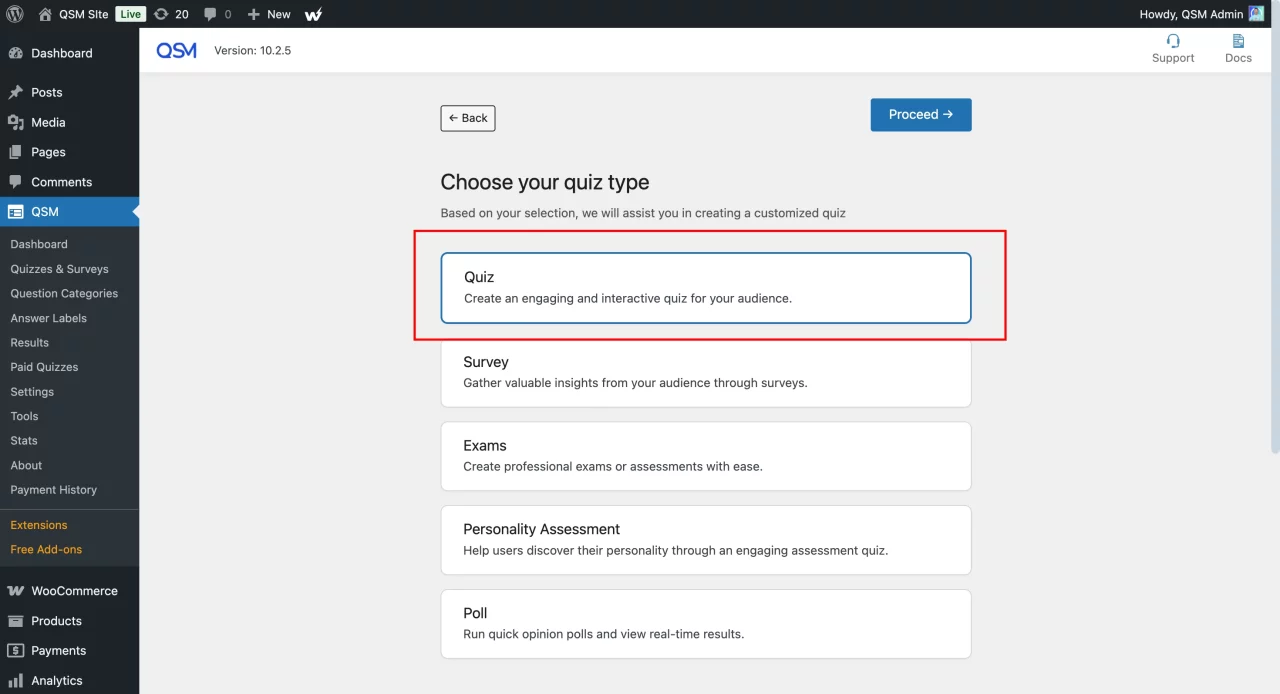
In the assessment settings, create four outcome labels: Upholder, Questioner, Obliger, and Rebel. These labels will act as the backbone of your quiz logic, ensuring that every answer is mapped to the right tendency.
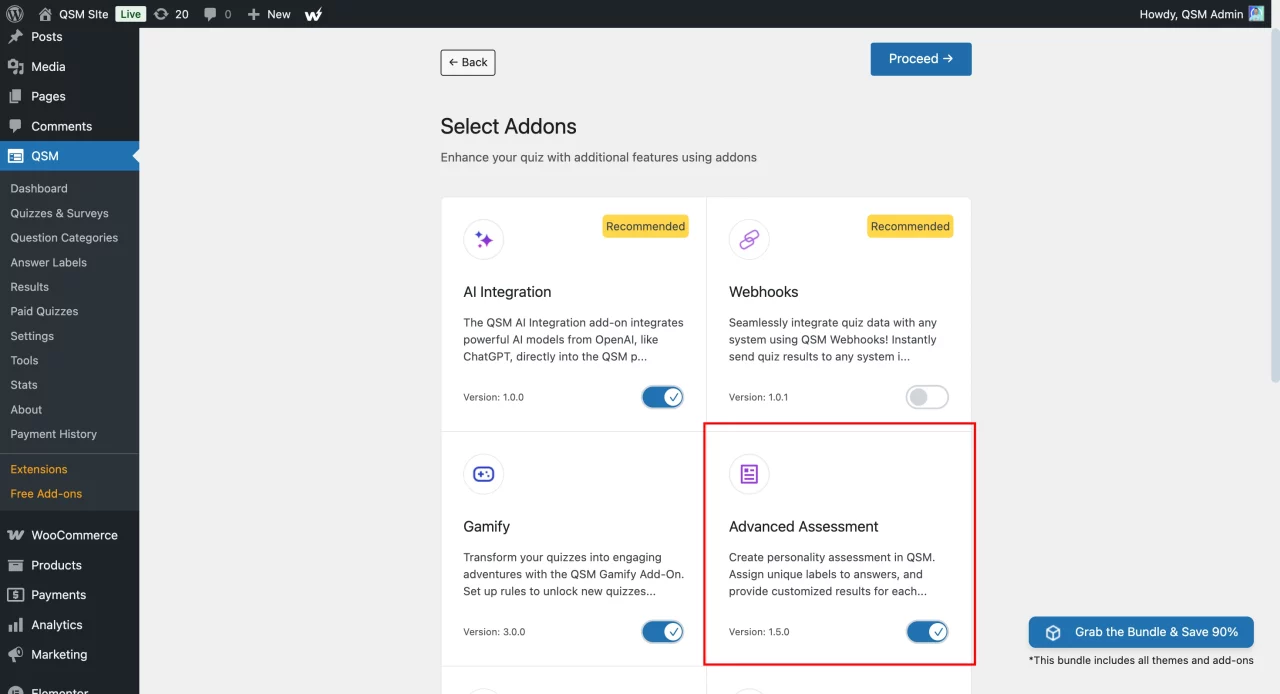
Step 2: Add questions and map answers to labels
Next, build your question set. The Four Tendencies quiz works best with multiple-choice questions, where each option reflects a tendency. In QSM, you can add each question under the Questions tab and assign labels to the answers using the Advanced Assessment feature.
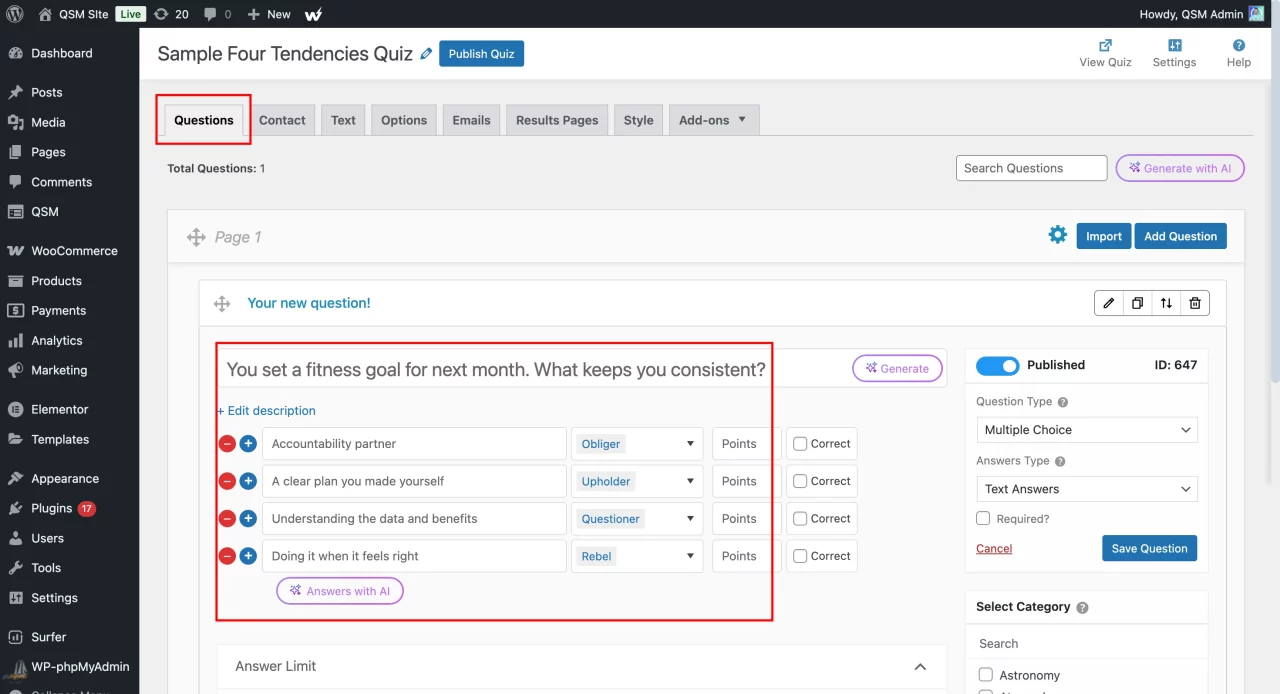
For example:
- “You set a fitness goal for next month. What keeps you consistent?”
- Accountability partner → Obliger
- A clear plan you made yourself → Upholder
- Understanding the data and benefits → Questioner
- Doing it when it feels right → Rebel
Continue adding 8–15 questions, balancing them so that all tendencies have fair representation. This step is where QSM shines—it makes labeling and scoring seamless without extra coding.
Step 3: Customize the quiz experience
Once your questions are ready, it’s time to customize how the quiz feels for participants. QSM gives you several tabs that let you fine-tune the experience.
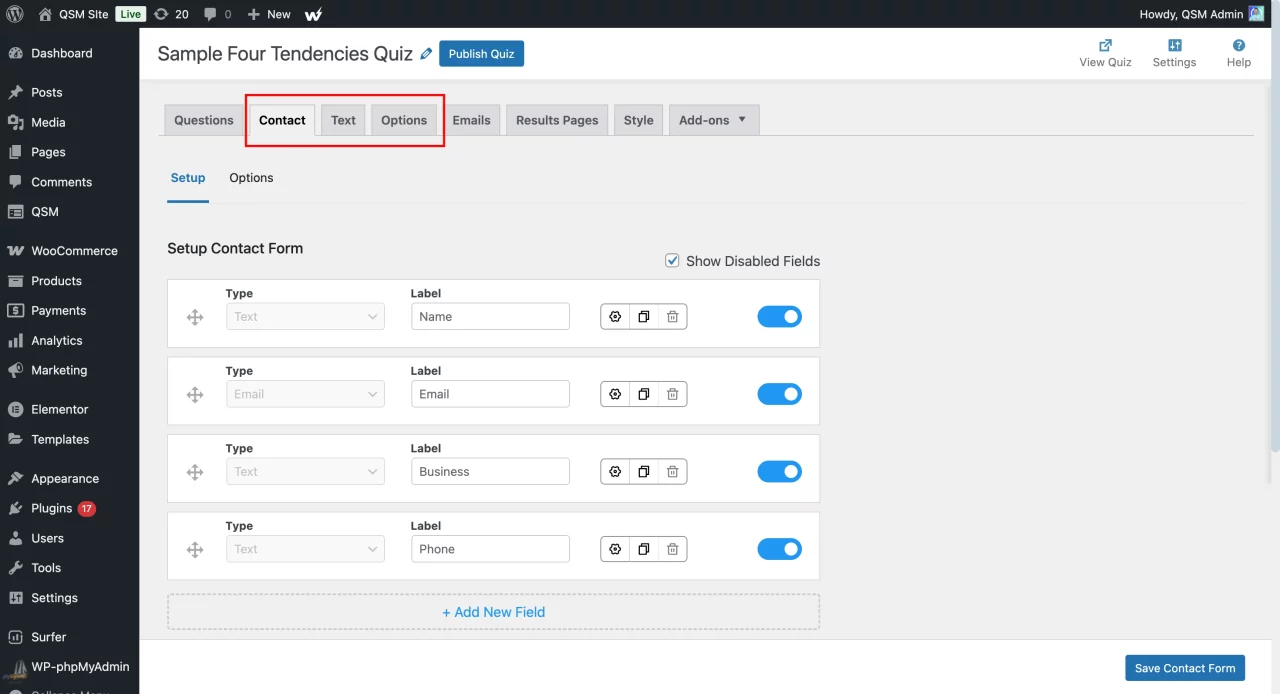
- Contacts Tab: Collect participant names and emails before or after the quiz. This is useful if you plan to email results or build a mailing list. Fields like name and email can be marked as required.
- Text Tab: Personalize the text shown at different stages of the quiz. Write a friendly welcome message at the start, clear instructions between sections, and a thank-you note at the end. Template variables (like inserting a participant’s name) can make the experience feel more personal.
- Options Tab: Adjust how the quiz runs. Choose whether questions appear all at once or one at a time, enable a progress bar, shuffle questions if needed, and set restrictions such as attempt limits. You can also style buttons and layouts without touching code.
This step ensures your quiz looks polished and is enjoyable to take on both desktop and mobile.
Step 4: Set up emails and notifications
QSM allows you to automate follow-ups through its Emails tab. Create at least two email templates: one for participants and one for yourself (or your team).
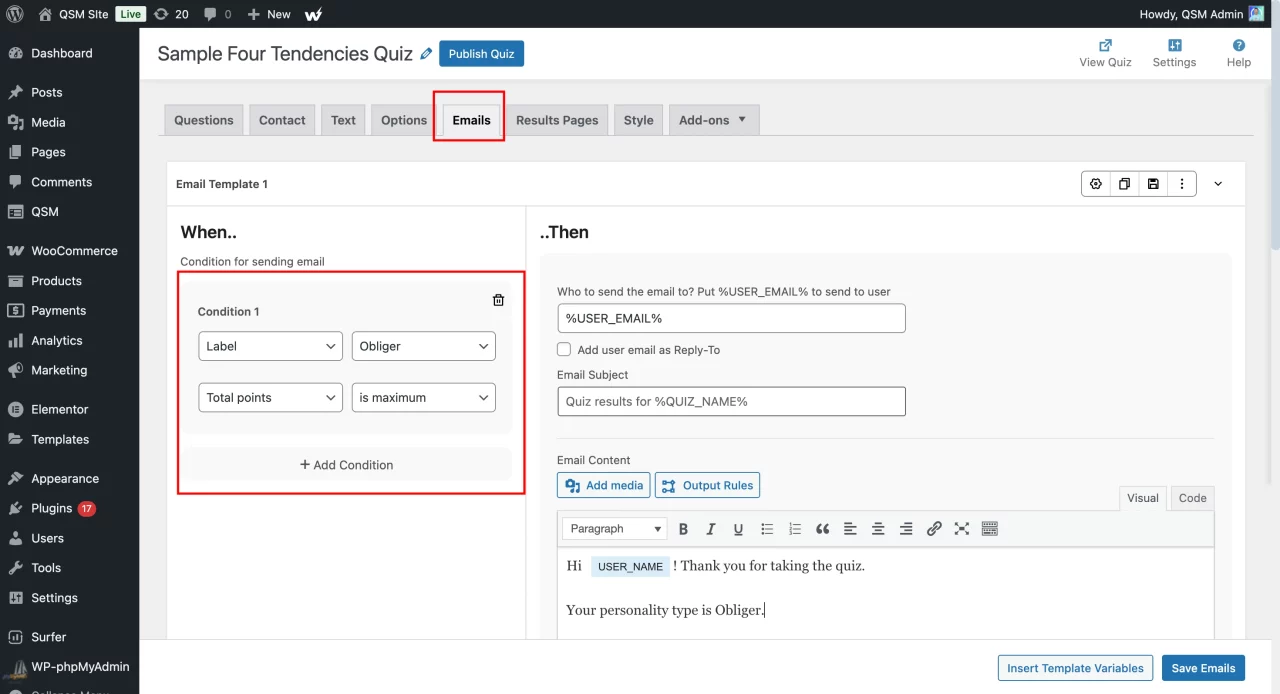
- The participant’s email should thank them for taking the quiz, display their tendency outcome, and optionally link to resources like blog posts or guides for their type.
- The admin email will send you a summary of responses, including participant names, emails, and detected tendencies.
With add-ons, you can even integrate QSM with platforms like Mailchimp or Zapier to automatically tag participants and trigger nurture campaigns.
Step 5: Build personalized result pages
Results are the heart of any personality quiz. In the Results Pages tab, create a separate page for each tendency: Upholder, Questioner, Obliger, and Rebel. Write clear, engaging descriptions that explain what the outcome means and how participants can use it in daily life. For instance, Upholders may benefit from clear deadlines, while Rebels thrive on freedom and choice.
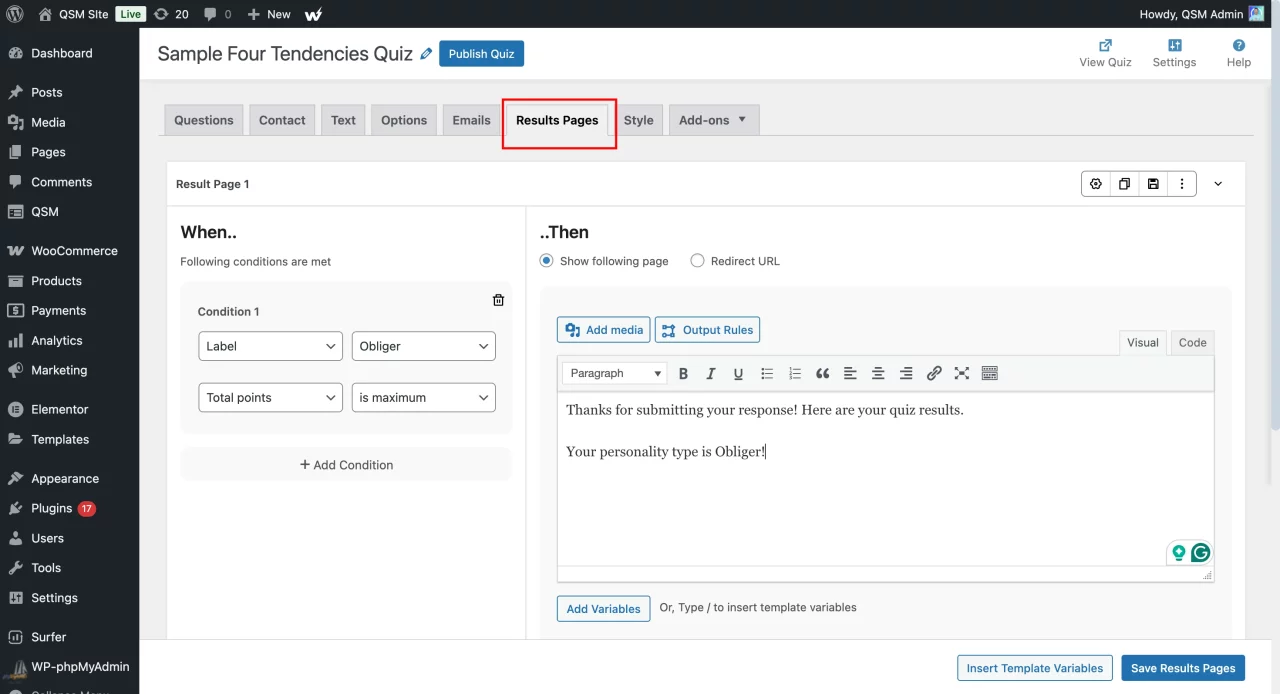
Use QSM’s conditional formatting to show the right page based on labels. Add visuals or icons that represent each type, and finish each page with a call-to-action, such as subscribing to your newsletter or sharing their result on social media. This level of personalization is one of QSM’s strongest features.
Step 6: Preview, test, and publish the quiz
Before publishing, always preview your quiz. Test every possible path to ensure each tendency result displays correctly. Check how the quiz looks on mobile devices, confirm that emails are delivered, and review how data is recorded in the Results tab.
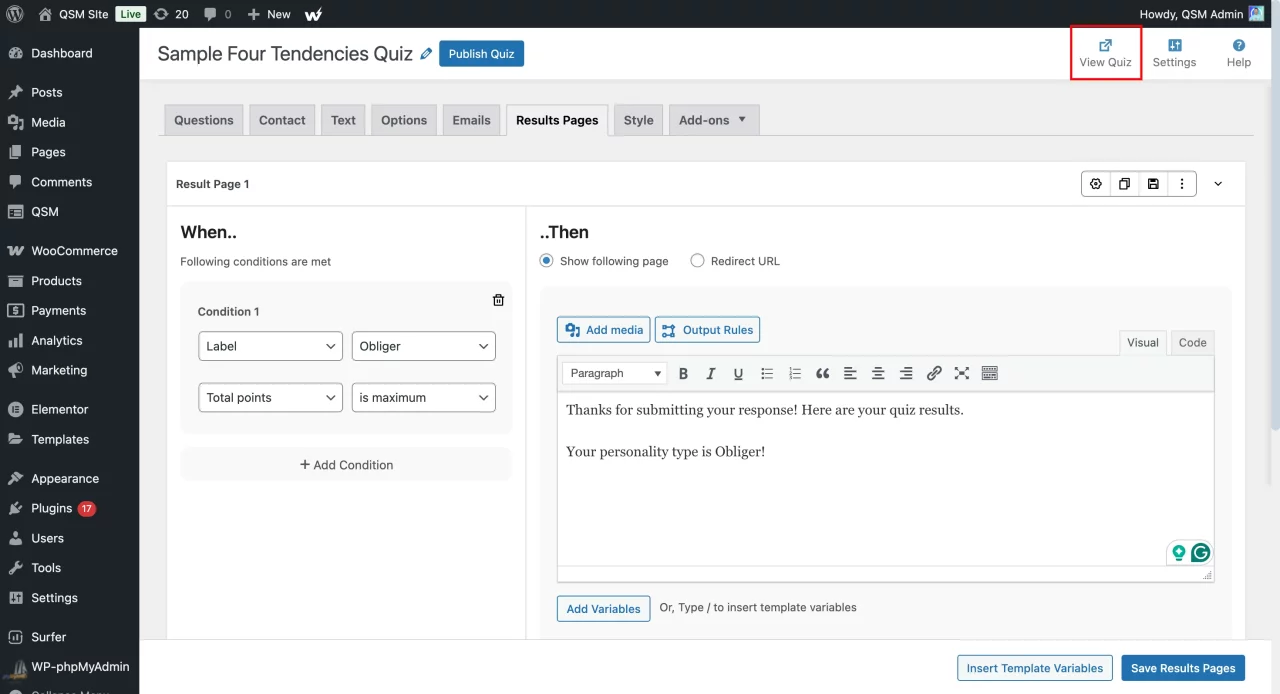
Once satisfied, embed the quiz on your website using QSM’s shortcode or Gutenberg block. After publishing, promote it widely—share the link in your articles, post about it on social media, and encourage readers to compare their results with friends. If you want deeper insights, QSM add-ons like the Google Sheets Connector or Export Results make it easy to analyze responses and improve future quizzes.
FAQS
What is the four tendencies quiz?
Devised by author Gretchen Rubin, the four tendencies quiz helps you understand why you act the way you do. It starts with the simple question: “How do I respond to expectations?” Rubin classifies expectations broadly into two types- Outer expectations (answering a request from a friend or meeting work deadlines) and inner expectations (keeping up with a new year’s resolution, starting to exercise).
Our response to these expectations determines our “tendency”. We vastly divide tendencies into four categories, namely Upholder, Questioner, Rebel, and Obliger.
What is the four tendencies framework?
Gretchen Rubin, a New York Times bestselling author, created a psychological framework called The Four Tendencies that categorizes people into four different groups: Upholders, Questioners, Obligers, and Rebels.
What is a questioner tendency?
Gretchen Rubin Questioners are always wondering, “Why do I have to do it this way?” Questioners are very good at asking questions. This means that they question outer expectations and don’t meet these expectations unless they make sense to them. In case you are a questioner, you will probably want to find answers so you understand why certain expectations require fulfillment in a particular way.
Final Thoughts
The Four Tendencies quiz is a simple yet powerful way to understand how people respond to expectations. By identifying whether someone is an Upholder, Questioner, Obliger, or Rebel, the quiz offers clear insights into motivation styles and helps participants reflect on how they work best. It’s engaging, easy to take, and adds real value to wellness, education, and personal growth spaces.
With Quiz and Survey Master (QSM), creating this quiz is straightforward. From assigning labels with the Advanced Assessment add-on to building personalized result pages and automating emails, QSM provides everything you need in one place. Its customization options, integrations, and user-friendly interface make it one of the best tools for designing interactive quizzes on WordPress.
If you enjoyed this article, you might also like to read how to make a wellness quiz or how to make a divergent faction quiz.
